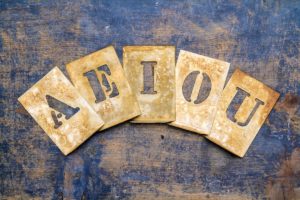Table of Contents[Hide][Show]
The Hawaiian language is an integral part of Hawaii’s cultural heritage, and its alphabet, known as the “piapa”, holds a unique place in linguistic history. Exploring the question of how many letters comprise the Hawaiian alphabet allows us to delve into the rich tapestry of the Hawaiian language and its remarkable journey through time.
The Hawaiian alphabet consists of only 12 letters: A, E, I, O, U, H, K, L, M, N, P, and W. The simplicity of the Hawaiian alphabet reflects the simplicity of Hawaiian life and culture.
History of the Hawaiian Language and Alphabet
The Hawaiian language was originally a spoken language, and there was no written form of the language until Westerners arrived in Hawaii in the 18th century.
When Westerners first tried to write Hawaiian words using the English alphabet, they found it difficult because the English alphabet did not have enough letters to represent all the sounds in the Hawaiian language. Therefore, they developed a new writing system that combined some of the letters of the English alphabet with a few new symbols.
The first written records of Hawaiian were made by Christian missionaries who came to Hawaii in the early 19th century. They developed a written form of Hawaiian using the piapa, which they called the “Hawaiian alphabet.” The missionaries used the Hawaiian alphabet to translate the Bible into Hawaiian and to teach Hawaiians to read and write.
Beyond its mere existence, the Hawaiian alphabet plays a vital role in preserving Hawaiian culture. The written Hawaiian language enables educational pursuits, literature, and official documentation, safeguarding the heritage of the islands and fostering a sense of identity among Hawaiians.
Suppression of the Hawaiian Language
The Hawaiian language has had a tumultuous history, and it almost disappeared completely in the 19th and 20th centuries.
The suppression of the Hawaiian language by the American government and the influence of English “settlers” caused many Hawaiians to stop speaking Hawaiian and switch to English. However, in recent years, there has been a resurgence of interest in the Hawaiian language and culture, and many Hawaiians are now learning and speaking Hawaiian once again.
Nowadays, Hawaiian is no longer the dominant language on the islands. However, there are still islands and areas where the Hawaiian language is dominant. For example, the island of Ni’ihau has an entirely Hawaiian-speaking population.
How Many Letters Are in the Hawaiian Alphabet?
Adapting the English alphabet to the Hawaiian language posed challenges due to the disparity in phonetic sounds. The result was the creation of the “piapa”, a simple alphabet consisting of 12 letters: A, E, I, O, U, H, K, L, M, N, P, and W.
The piapa consists of five vowels (A, E, I, O, U) and seven consonants (H, K, L, M, N, P, W).
The vowels are pronounced the same way as in English, but the consonants are pronounced differently. For example, the letter “H” is pronounced as “hah” instead of “aych,” and the letter “W” is pronounced as “vah” instead of “double-u.”
Hawaiian Language Pronunciation
Understanding the pronunciation of the Hawaiian alphabet is essential to grasping the nuances of the language. While the vowels resemble their English counterparts, the consonants differ in pronunciation. For instance, the letter “H” is pronounced as “hah,” and “W” as “vah.” Additionally, glottal stops, denoted by the ‘okina symbol (ʻ), add complexity and alters word meanings.
Okina
The piapa includes two glottal stops, represented by the symbol “ʻ” called the ‘okina. The glottal stop is a sound made by closing the glottis (the space between the vocal cords) and releasing it suddenly, creating a slight pause in the sound.
The ‘okina is used to separate syllables, and it changes the meaning of a word when used in different places. For example, the word “aloha” means “hello,” but “a’loha” means “love.”
Macrons
Another unique aspect of the Hawaiian language is the use of macrons, which are lines above the vowels to indicate a longer pronunciation. For example, “ā” indicates a long “a” sound, as in “haole” (how-ley), which means “foreigner.”
Comparison with the English Alphabet
Contrasting the Hawaiian and English alphabets reveals intriguing differences. Notably, the absence of certain letters, such as C, Q, R, S, X, and Z, exemplifies the uniqueness of the Hawaiian language. This distinction showcases how the piapa captures the specific sounds and spirit of Hawaiian speech.
Is The Hawaiian Language Taught Today?
Yes, Hawaiian is taught today.
Although many were and still are worried about the language’s survival, many of the island’s native inhabitants have been unrelenting in their mission to save the language.
The plight of the language and the fight of the native speakers have become more obvious to outside observers, thanks to constant news about the islands and the advent of the internet.
The internet has, in fact, fueled a resurgence in learning the language, since it provides many resources and archives full of all the world’s information.
Many language learning websites and apps, such as Duolingo and Memrise, feature a Hawaiian course and though it is small, it is a start, and it shows that while the Hawaiian language may be down, it is not out.
Other Polynesian Languages
Hawaiian is not the only Polynesian language. There are approximately 30 Polynesian languages in existence.
These languages are spoken across various islands and regions in Polynesia, including Samoa, Tonga, Fiji, Cook Islands, Hawaii, French Polynesia, and Maori-speaking communities in New Zealand.
Each Polynesian language has its own unique characteristics, vocabulary, and grammar, contributing to the rich linguistic diversity within the Polynesian cultural sphere.
Some of the other Polynesian languages include:
- Samoan: Samoan is the official language of Samoa and is also spoken by Samoan communities in other countries, such as New Zealand and the United States. It has 14 consonants and 5 vowels and uses macrons to indicate long vowels.
- Tongan: Tongan is the official language of Tonga and is also spoken by Tongan communities in other countries, such as New Zealand and Australia. It has 16 consonants and 5 vowels and uses macrons to indicate long vowels.
- Maori: Maori is the indigenous language of New Zealand and is spoken by the Maori people. It has 10 consonants and 5 vowels and uses macrons to indicate long vowels.
- Tahitian: Tahitian is the official language of French Polynesia and is also spoken in other parts of the Pacific, such as the Cook Islands. It has 13 consonants and 5 vowels and uses macrons to indicate long vowels.
- Fijian: Fijian is the official language of Fiji and is spoken by the Fijian people. It has 31 consonants and 5 vowels and does not use macrons to indicate long vowels.
Conclusion
The Hawaiian alphabet, with its concise 12-letter structure, symbolizes the beauty and simplicity of the Hawaiian language. Through the piapa, Hawaiians have embraced their cultural heritage, ensuring the survival and growth of a language once threatened by external influences.
The Hawaiian alphabet serves as a testament to the resilience and rich traditions of the islands, representing a bridge between the past, present, and future of Hawaiian culture.
Related Article: 10 Hawaiian Greetings You Should Know!



 Are There Ticks In Hawaii?
Are There Ticks In Hawaii?